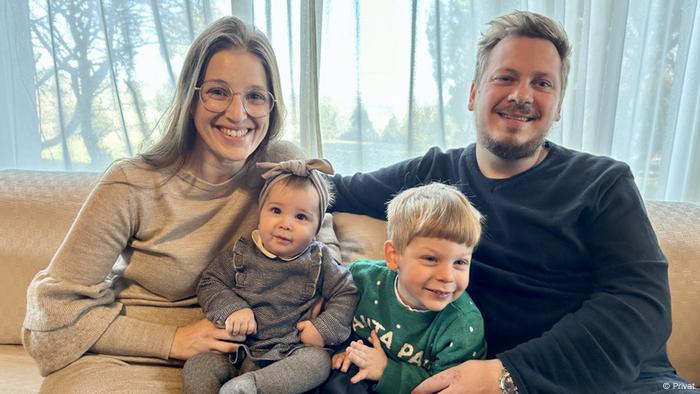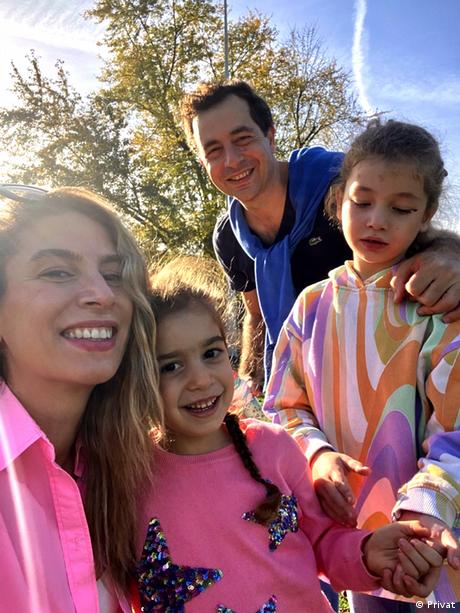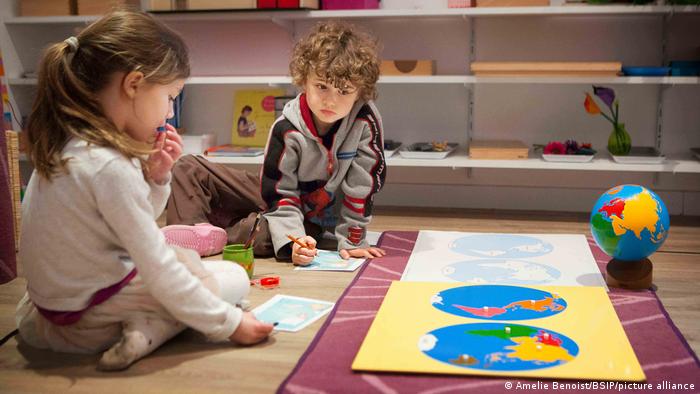More and more children are learning two or more languages at the same time. How multilingual education works, why it doesn't depend on the perfect strategy and even mixing languages is allowed.

Two and a half year old Enrique is sitting on the living room floor, his snub nose sticking out over a picture book with colorful triangles, circles and squares. “Où est le triangle rouge?” asks his mother Chloé in French, “Where is the red triangle?” “Ici!” Enrique replies while tapping the red triangle with his finger and beaming at his mother. “¿Dónde está el círculo amarillo?” asks his father Juan in Spanish, “Where is the yellow circle?” “¡Aquí!” exclaims Enrique.
Like Enrique, more and more children around the world are growing up speaking two or more languages at the same time. French woman Chloé Koers-Bourrat and Spaniard Juan Koers live near Madrid with him and his eight-month-old sister Alice. Like many multicultural couples, parents want their children to learn both languages.
A question of the right strategy?
In order for this to succeed, Chloé speaks almost exclusively French with the two children, while Juan almost always speaks Spanish. They speak Spanish among themselves – their common family language. Experts call this approach “One person, one language”. This is one of several methods that have been established in multilingual education.

The Koers-Bourrat family (from left): Chloé (30), Alice (8 months), Enrique (2) and Juan (35)
Things are a little different with Yeliz Göcmez's family from Frankfurt. Both Yeliz and her husband were born in Turkey. At home, they speak Turkish, their mother tongue, with their two daughters, Melissa (7) and Mila (4). “Outside – in daycare, at school and in their free time – the children speak German,” says mother Yeliz. Experts often call this approach “home versus outdoors”.
There is also the activity-based method, for example: family members speak Arabic at meals, for example, and French while playing. Or the time-bound method: Chinese in the morning when getting dressed and having breakfast, German in the evening.
Stimulate the child's language as often as possible
Many parents ask themselves which method is the best and how they can pull the whole thing through the most stringently. However, research shows that when it comes to multilingual education, it is not all about the one perfect strategy. “It's about stimulating the child's language as often and as diversely as possible,” says Wiebke Scharff Rethfeldt, professor of speech therapy at the Bremen University of Applied Sciences. That means talking to the children as much as possible about many different topics.

The Göcmez couple (38 and 43) with her two daughters Mila (4) and Melissa (7)
Parents should not set a strict rule as to which language is used. Instead, they should choose the language or languages in which they feel most comfortable and in which they can talk the most. “It can be your own mother tongue, but it doesn't have to be,” says Scharff Rethfeldt.
This is how the Koers-Bourrat and Göcmez families chose their languages: “French and Spanish are simply the languages that feel most natural to us and in which we automatically speak to the children,” says Juan. “Turkish is the language in which we can best express our feelings,” says Yeliz.
Expressing feelings, giving comfort and conveying closeness are elementary according to Scharff Rethfeldt: “Because it's not about being a language teacher but as a parent who builds an emotional bond with the child,” says the speech therapist.
Remain flexible and make exceptions
Parents don't have to stay in their feel-good language all the time. “Constantly separating languages corresponds to a monolingual, monocultural mindset. That no longer fits in today's world,” explains Scharff Rethfeldt. Instead, families should remain flexible and switch languages when the need arises. This relieves the parents and the children keep having fun learning languages.
The Koers-Bourrat family also deviates from their rules from time to time when the situation requires it. “When Chloé's mother is visiting from France, for example, I also speak French,” says Juan. “Or when we meet friends in Madrid, I also speak Spanish with Enrique so that everyone can understand and participate in the conversation,” adds Chloé.
Juan and Chloé speak both languages almost perfectly and rarely make mistakes in their respective second languages. “But even mistakes are not dramatic,” explains speech therapist Scharff Rethfeldt. “Children are very robust language learners. They can learn the right grammar rules, even if they occasionally hear incorrect sentences.”
It's a similar story with the Göcmez family. For example, during the phone call to DW, one of the daughters asks something in Turkish in the background. However, her mother Yeliz answers her in German because she is in the German language flow anyway because of the interview.
“At home we always take the children to language islands,” says Yeliz. “We then read our daughters a book in German, for example, or listen to German children's songs, although we speak Turkish the rest of the day.”
Mixing languages is allowed
It also happens that a German word gets lost in a sentence in Turkish. “In everyday life, you just can't separate 100 percent,” says Yeliz. Speech therapists now agree that mixing languages is perfectly permissible. Because children know which word belongs to which language. They already learn in the womb to distinguish languages by their sounds.
“That is just multilingualism. Language mixtures are part of it, and that is also not bad at all,” says Scharff Rethfeldt. “We're showing the child: Look, I'm multilingual too, I can juggle languages and switch back and forth. That's something positive, a skill that distinguishes me – and you too.” < /p> 
Multilingual upbringing: The most important thing is to talk to the child as much as possible
Does a multilingual upbringing also have disadvantages?
The myth that children start later is a persistent myth speak – or even have problems with language development. However, this has long since been refuted: “Language development disorders are already congenital and are not triggered by multilingualism,” says speech therapist Scharff Rethfeldt.
About eight percent of children have such a disorder – this applies to monolingual and multilingual children alike. The problem is that with the latter, it is blamed on multilingualism.
Nevertheless, it can take a little longer for a child to speak both languages on the same level as a monolingual child of the same age. This is not because language development is slower, but because it takes more time for a bilingual child to get the same input in one language.

Multilingual children see the world differently
Access to two cultures
A multilingual upbringing has many advantages for the whole family instead of disadvantages. For example, Yeliz' daughters Melissa and Mila can easily communicate with grandma and grandpa when the family goes to Turkey for vacation. “The Turkish language is like a bridge to your grandparents,” says Yeliz.
“Anyone who is in the position of being able to communicate in more than one language gains access to a different culture and way of life,” says speech therapist Scharff Rethfeldt. “As a result, you tend to reflect on your own perspectives.”
Another advantage: if children already speak two languages, it is much easier for them to learn a third or additional language learn. “Children who grow up bilingual already know that expressions in another language cannot be translated one-to-one,” says Scharff Rethfeldt. They find it easier to get used to a new language.
Yeliz Göcmez noticed that too. “We recently had an au pair at home who speaks English with the children,” she says. The little daughter Mila absorbed the new language like a sponge. “She even speaks in full sentences, for example with “because” or “but”. That was really a nice surprise for us.”